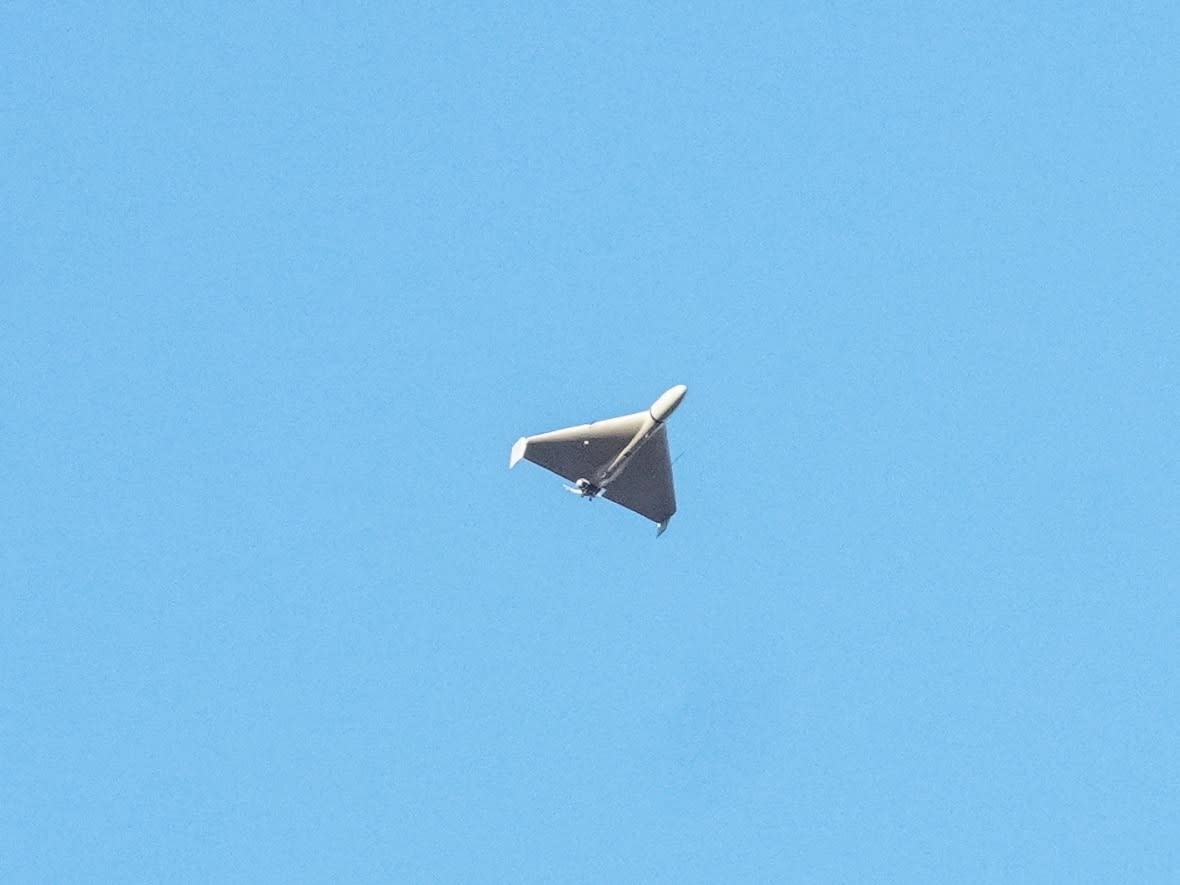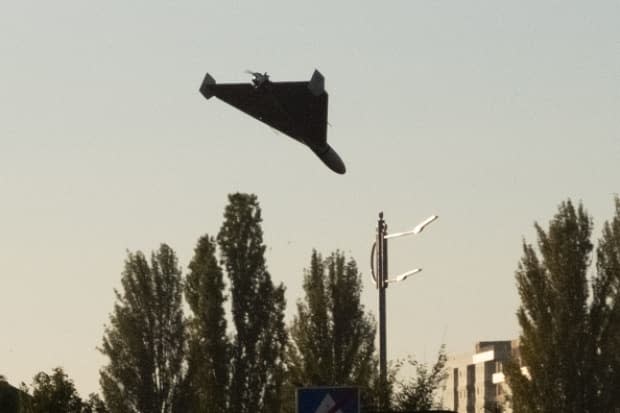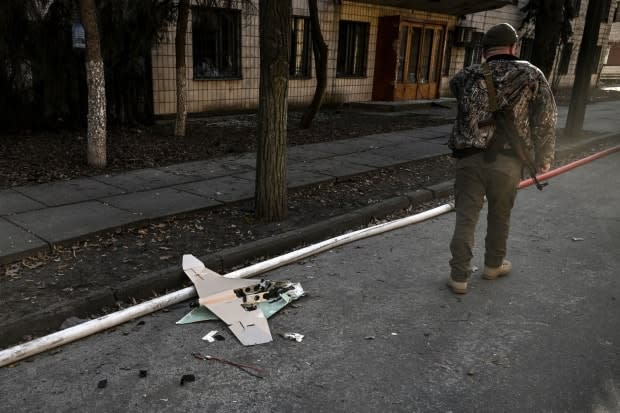Why the popularity of drones means civilian technology is ending up on the battlefield

Canadian manufacturer Bombardier Recreational Products (BPR) confirmed that its engine found in a drone used by Russia was not directly sold by any of its distributors after reports noted that the company's engines had been found inside Iranian-manufactured drones in the war in Ukraine.
In mid-October, several photos circulated on Twitter that appeared to show Austrian Rotax engines inside downed military drones allegedly manufactured by Iran, including a post by Anton Gerashchenko, advisor to the Ukrainian Ministry of Internal Affairs, which said the drone was shot down over the Black Sea.
"We confirm that, with the collaboration of a partner in Ukraine and the assistance of local authorities, we have identified the engine found in the downed Mohajer-6 drone," BRP-Rotax spokesperson Biliana Necheva said in a statement.
The engine in question was likely a Rotax 912 engine, used primarily by hobbyists in both light aircraft and unmanned aerial vehicles. Experts say engines in civilian aircraft like these are popular for use in unauthorized military equipment because they are cheap and easily retrofitted. Because they're designed for civilians, the engines may also be subject to fewer export controls, unlike parts specifically intended for military use.
Earlier this month, Iran acknowledged that it sold drones to Russia, months before the war in Ukraine.
BRP-Rotax said in its statement that it began an investigation to determine the source of the engines soon after it was made aware of the situation. Rotax is an Austrian subsidiary owned by BRP.
The company said its investigation also confirmed that it had "acted in full compliance with all applicable laws and regulations."
This instance is not the first time unauthorized use of BRP technology has been reported.
In 2020, BRP-Rotax suspended delivery of its products to countries with unclear usage after a similar Rotax engine appeared in a Turkish drone used in Nagorno-Karabakh.
Technology similar to that found in BRP's Sea-Doo was reportedly found in Ukraine earlier this month powering a sea drone.

Engines cheap to retrofit, expert says
According to a list maintained by BRP-Rotax, over 150 engines have been stolen from 1996 to 2021.
Two of the most targeted models are variations of the 912 or 914 engine, according to the list. BRP-Rotax said it does not know of any recent spike or increase in engine thefts.
Jeremy Laliberte, an aerospace engineer and professor at Carleton University, says that it is not uncommon for engines like these to be found in unauthorized military equipment.
"There's nothing really too special about the engines," said Laliberte.
"They happen to have a military application, but their performance is nothing spectacular. They're not supersonic, they're not stealthy, there's really nothing exotic about them."
He said what may appeal to those retrofitting the engines for combat use is their quality and price point, since they are likely cheaper to acquire than military-grade engines.
Regulating dual-use products
BRP-Rotax said their engines are not designed for military purposes and that they are "not listed as dual-use items."
But according to experts like Laliberte, these engines can still qualify as "dual-use" products. These are items that, while intended for civilians, can be easily retrofitted for military use.
The Government of Canada describes dual-use goods as having "the potential to be used or modified to produce weapons and military items."
Some dual-use goods are regulated by both Canadian export control lists, and European Union (EU) control lists when they have clearly delineated military uses.
While the Rotax engine is a dual-use item, it is not identified as a military-use item.
In a statement to CBC, Global Affairs Canada said Canada is following the BRP investigation closely, and that "the combination of export controls and extensive Canadian and UN sanctions already in place against Iran severely limit both imports and exports."
WATCH | Iran's drones a problem beyond Ukraine, expert says:
Experts agree that since the engines were manufactured in Austria, they do not fall under Canadian export regulations, but instead under export controls listed by the EU.
"The current set of EU sanctions is not explicitly clear with regard to engines such as the Rotax 912 engine," said Austrian ministry of labour and economy spokesperson Alexandra Perl.
The ministry noted that not all dual-use items are listed under EU sanctions.
Items that could be used for both civil or military purposes could include a broad range of products, such as cars and smartphones, which introduces challenges to regulation.
"It would be logistically impossible and ineffective to require an authorization for the export of such common household articles to countries that are not under sanctions," Perl said.
In countries that are sanctioned or have arms embargoes such as Russia, the export control list includes a broader array of military and non-military dual-use products.
As a result, the ministry said exporting these dual-use items from Austria to Russia would be illegal, but that export from Austria to Iran would be legal. It said that to its knowledge, no Rotax 912 engines have been exported from Austria to Iran in the last five years.
The ministry also said the engines might have never been exported from the EU to Iran, and could have "been exported to another third country under the false pretense that they are to be used for civilian purposes and could then have been illegally diverted (resold) to entities in Iran."

Experts want enhanced regulations, tracking methods
Experts suggested a multi-faceted approach between governments, companies, their subsidiaries and their consumers to ensure dual-use items don't appear in unauthorized military equipment.
Laliberte pointed to commercial aircraft regulation, where he said regulations are stronger.
"Individual parts are identified, there's lots of effort to prevent counterfeit parts, and parts from leaving the supply chain and going into other applications," said Laliberte. "That's probably where these other aviation sectors can adopt some practices."
Mark Bromley is the director of the dual-use and arms trade control programme at the Stockholm International Peace Research Institute.
As the defence sector increasingly draws upon and utilizes civilian technologies in its weapon systems, the challenges of trying to draw a clear line around the defence sector is going to be even greater. - Mark Bromley, Stockholm International Peace Research Institute
He said the integration of civilian technology into military systems generates huge control challenges, which is being witnessed in the war in Ukraine.
"As the defence sector increasingly draws upon and utilizes civilian technologies in its weapon systems, the challenges of trying to draw a clear line around the defence sector is going to be even greater," he said.
"What can we do potentially, beyond export controls, to try and track those types of transfers, to identify the kind of points of diversion as they occur and then to kind of cut them off?"
WATCH | The role drones are playing in Ukraine's fight against Russia:
Bromley said companies should have knowledge of both their direct customers and their third-party customers and they should also require the wholesalers they supply to keep track of their buyers.
"Even if hard law requirements in the field of export controls don't apply, companies still have soft law obligations under the UN guiding principles on business on human rights."


